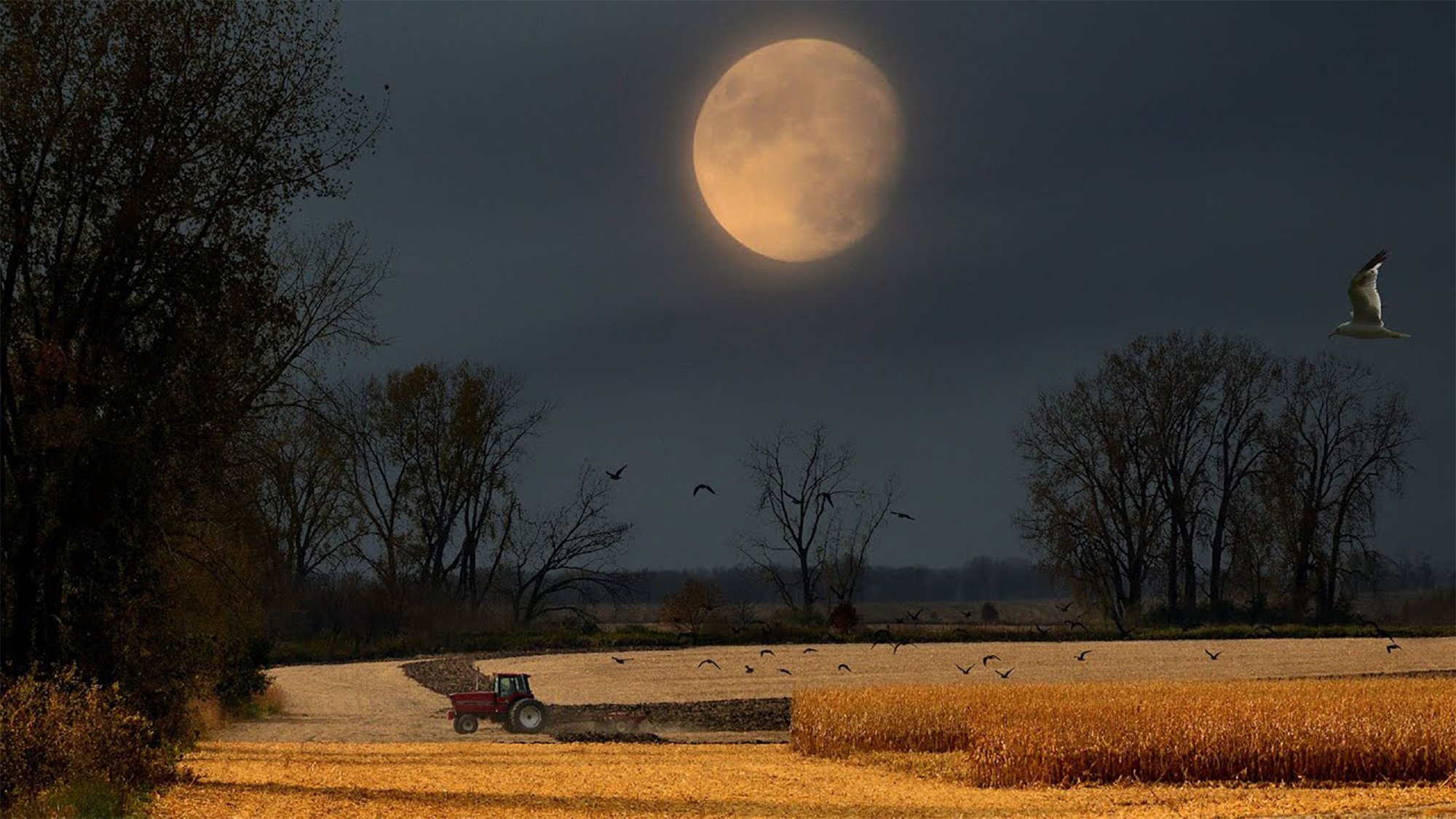

| September 1 | Aurigid Meteor Shower Predicted Peak |
| September 12 | Nishimura Comet Closest Approach |
| September 18 | Venus at Greatest Brightness |
| September 23 | Autumnal Equinox |
| September 29 | Full Harvest Supermoon |
Summer skygazing season in the Northern Hemisphere is quickly drawing to a close. September 1 marks the beginning of meteorological autumn, and we are racing towards the Autumnal Equinox. While the temperatures may finally start to get a little bit cooler, the night sky is staying pretty hot with a very bright Mercury beginning in mid-September, a meteor shower, and the last supermoon of the year. Here are some events to look out for this month and if you happen to get any stellar sky photos, please tag us and include #PopSkyGazers.
[Related: Climate change is affecting fall foliage, but not in the way you think.]
September 1- Aurigid Meteor Shower Predicted to Peak
The day after August’s Blue Moon, the Aurigid meteor shower is predicted to reach its peak. This meteor shower has been active since August 28 and will wrap up on September 5. From the eastern US, the shower will likely be visible around 11:30 PM each night when its radiant point rises above the eastern horizon. It is predicted to remain active until dawn breaks at around 5:51 AM. In the Sky estimates that viewers could see about five meteors an hour and that the bright moon will likely cause some viewing interference.
September 12 – Nishimura Comet at Closest Approach
Anyone can buy a certificant to get a star named after them, but only the lucky can have comets named for them. That’s what happened earlier in August when Hideo Nishimura of Kakegawa, Japan was photographing the night sky and captured an image of Comet C/2023 P1 (Nishimura). The comet orbits the sun every 520 years and is expected to be at its closest approach to our planet this month, as long as it survives a cozy orbit around the sun even tighter than the planet Mercury’s loop. According to EarthSky, Comet Nishimura should become a binocular object during the first mornings of September if it survives its orbit. Observers with an unobstructed view to the east-northeastern horizon might get good binocular views of Comet C/2023 P1 (Nishimura) about 45 minutes before sunrise. It’s expected to pass at 78 million miles from Earth and does not pose any threat.
[Related: ‘Oumuamua isn’t an alien probe, but it might be the freakiest comet we’ve ever seen.]
September 18 – Venus at its Greatest Brightness
In addition to the planet Mercury lighting up the sky most of this month, our solar system’s brightest planet will be at its most radiant around the middle of September. Venus will be shining brightly at a magnitude of -4.5 early in the morning in the eastern sky. It will continue to remain pretty bright for the rest of the month and reach its peak altitude until October 20.
September 23 – Autumnal Equinox
Fall officially arrives in the Northern Hemisphere at 2:50 AM EDT on Saturday, September 23. The autumnal equinox occurs at the exact same moment around the world. It is the second equinox of the year, after March’s Spring equinox. During an equinox, the sun crosses an imaginary extension of Earth’s equator line called the celestial equator. The equinox happens precisely when the sun’s center passes through this imaginary line. In the Northern Hemisphere, the autumnal equinox happens when the sun crosses the equator from north to south. When the sun crosses from south to north, it marks the spring or vernal equinox, which is what happens in the Southern Hemisphere in September.
The days will continue to get shorter than the nights, since the sun will rise later and set earlier. This continues up until the winter solstice in December, when the days begin to slowly grow longer again.
[Related: We finally know why Venus is absolutely radiant.]
September 29 – Full Harvest Supermoon
September’s full moon, or the Harvest Moon, will reach its peak illumination at 5:58 AM EST. According to the Farmer’s Almanac, the full moon that happens nearest to the fall equinox always takes on the name Harvest Moon. The Harvest Moon also rises at roughly the same time, around sunset, for several consecutive evenings. This traditionally gives farmers several extra evenings of moonlight, helping them to finish harvesting before the frosts of fall are scheduled to arrive. This year’s Harvest Moon is also the last of four supermoons of 2023 and it will be 224,658 miles away from Earth.
Additional names for September’s full moon include the Corn Moon or Mandaamini giizis in Anishinaabemowin (Ojibwe), the Gourd Moon or Wade Nuti in the Catawba Language of the Catawba Indian Nation, South Carolina, and the Falling Leaf Moon or Poneʔna-wueepukw Neepaʔuk in the Mahican Dialect of the Stockbridge-Munsee Band of Wisconsin.
The same skygazing rules that apply to pretty much all space-watching activities are key this month: Go to a dark spot away from the lights of a city or town and let the eyes adjust to the darkness for about a half an hour.
